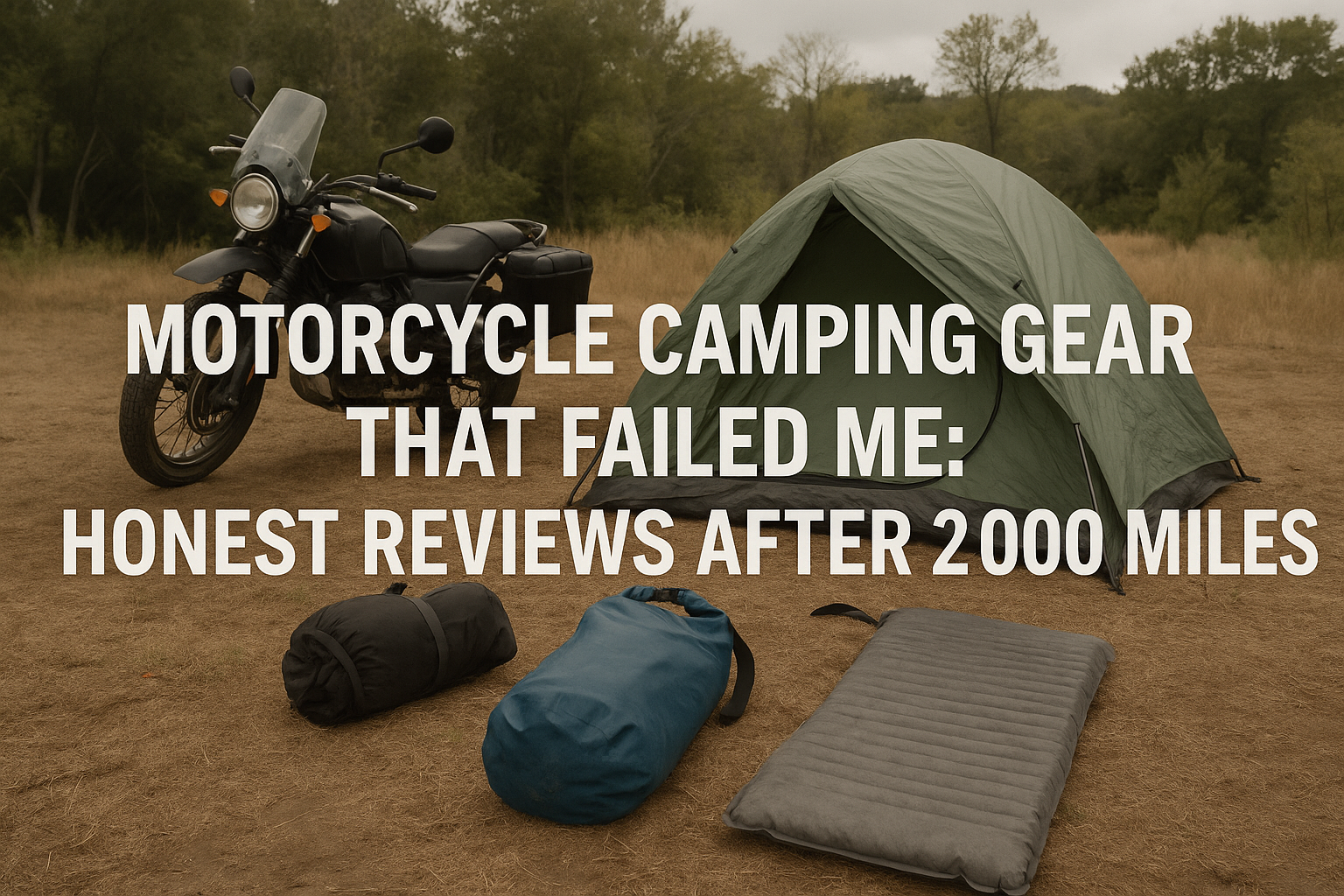Not all gear makes it past the first trip. Some of it dies quietly—zippers that jam, tent poles that bow. Others betray you loudly, like when your camp stove explodes or your sleeping pad deflates at 2AM in freezing temps.
After 2,000 miles of motorcycle camping across deserts, mountain passes, and muddy backroads, I’ve tested gear that claimed to be “adventure-proof.” Spoiler: some of it wasn’t.
This isn’t a “best gear” list. This is the stuff that didn’t survive—and why. If you’re serious about riding light and sleeping hard, these reviews will save you time, money, and maybe your sanity.
🏕️ 1. The Ultralight Tent That Couldn’t Handle the Wind
Gear: Naturehike Cloud-Up 2 Tent
Verdict: Failed after 3 uses
It looked perfect on paper: lightweight, compact, quick setup. And for calm weather? Not bad.
But the first desert windstorm exposed the flaws. The pole connectors warped. The rainfly flapped so violently it tore at the seams. One corner stake ripped out of the ground—and the tent tried to launch off the ridge with me inside it.
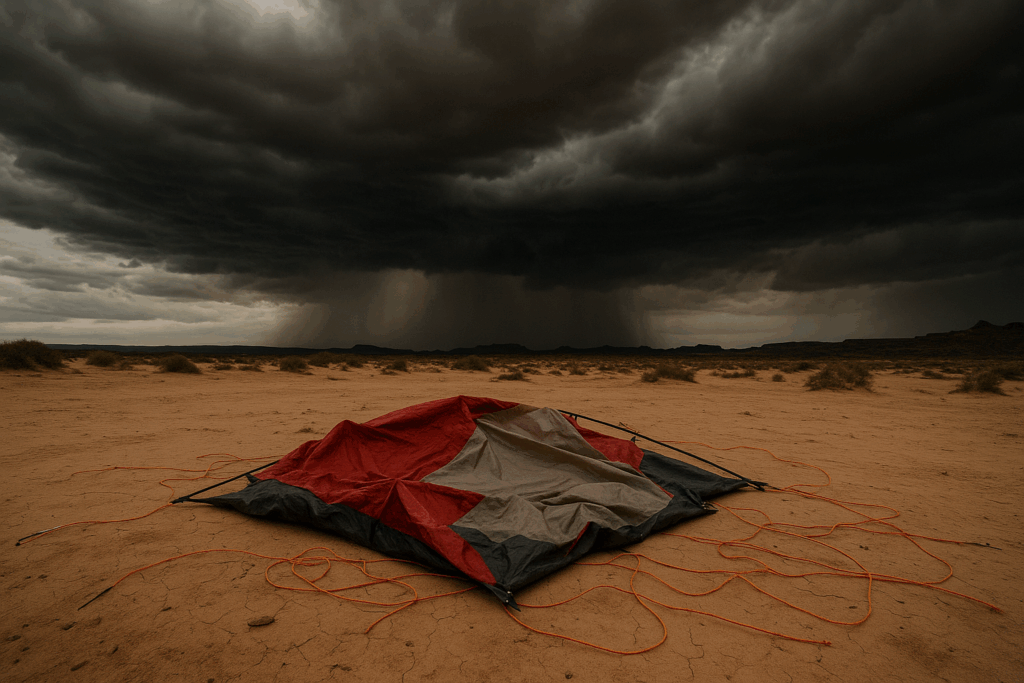
What Went Wrong:
- Factory guy lines were too thin and short
- Stakes were cheap aluminum and bent easily
- Pole sleeves couldn’t absorb lateral tension in gusts
If you ride into unpredictable weather, don’t cheap out on the tent. Get one with reinforced guy points and aluminum hubs, not plastic.
🔥 2. The Camp Stove That Became a Fireball
Gear: Lixada Folding Titanium Alcohol Stove
Verdict: Dangerous under pressure
It sounded perfect: no clunky fuel canisters, no fragile valves—just sleek titanium and simplicity. I packed it thinking it’d be the minimalist dream.
But on my third night, tucked between scrub brush in Utah’s high desert, I fumbled a bit of fuel onto my gloves. I struck a flame like usual—then noticed a strange heat on my wrist. The flame was damn near invisible in the daylight. By the time I smelled the rubber melting, I was already patting out a small fire with my sleeve and cursing like hell.
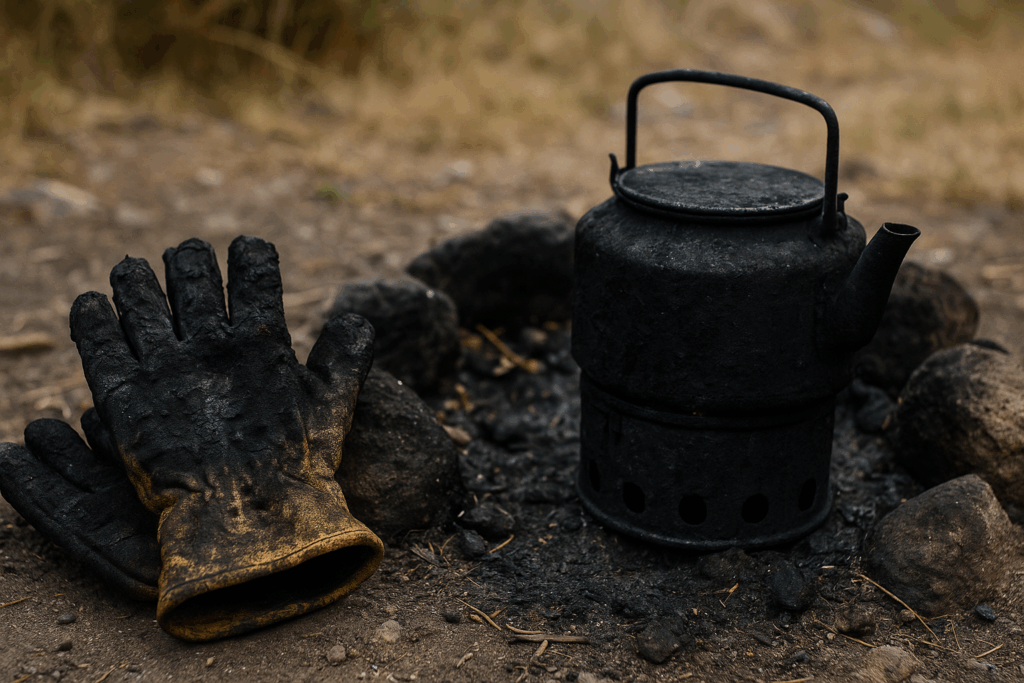
I learned quick: flame control matters more than weight savings. If you can’t see it, you can’t manage it. I now carry thicker gloves, a windscreen, and a healthy fear of alcohol stoves in dry country.
🧤 Tip: Always test your stove in daylight and wind before taking it into the wild. False confidence burns fast—literally.
What Went Wrong:
- Fuel chamber overflowed too easily
- No built-in flame control
- Wind guard barely worked, even with rocks
Verdict: Carry a windscreen and gloves no matter what. And if you’re using liquid fuel, practice lighting techniques before you hit the road. Visibility and control matter more than ultralight gimmicks.
🛏️ 3. The Sleeping Pad That Gave Up at 3AM
Gear: Klymit Static V Sleeping Pad
Verdict: Comfortable—until it isn’t
The first few nights felt like a win. I remember unrolling the pad on a cool pine forest floor, crawling into my bag, and thinking, This actually feels decent.
Then, night five hit. Somewhere outside Flagstaff, temps dropped below freezing. I woke up around 3AM to sharp pain in my hip—because I was lying on cold gravel. The pad had deflated again. No holes. No hissing. Just that slow, ghost-leak kind of betrayal that makes you doubt your sanity.
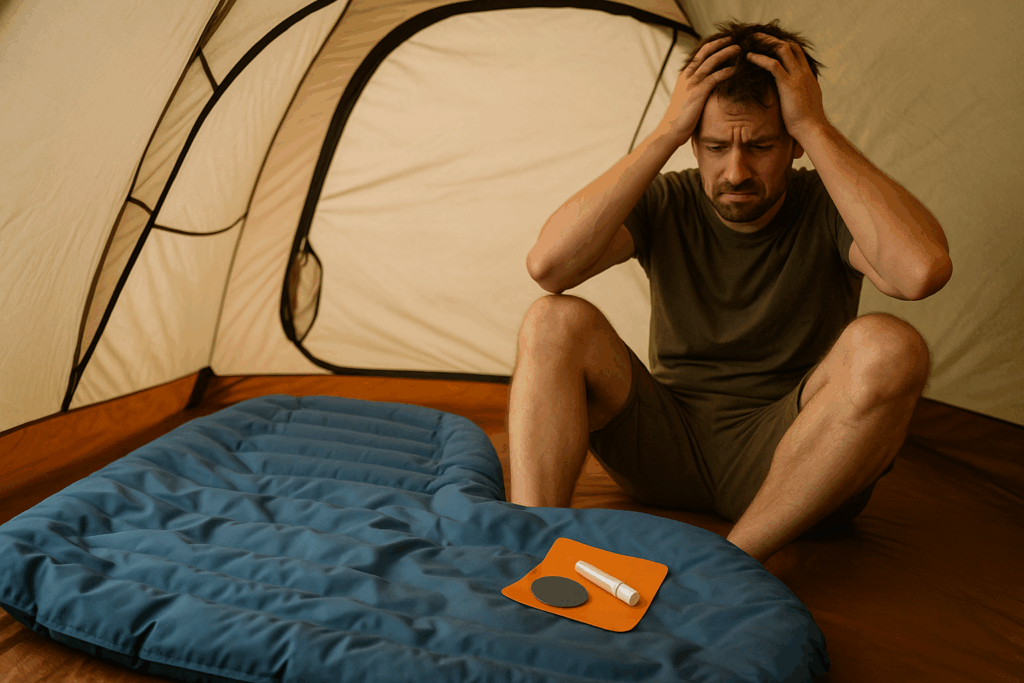
I spent the rest of the night with a hoodie bunched under me, trying to sleep through a pinched lower back and the sound of coyotes yapping in the distance.
🛏️ Lesson: Your gear doesn’t need to feel like luxury—it just needs to last. Especially when the ground won’t forgive you.
What Went Wrong:
- Valve began hissing with temperature shifts
- Internal seam failed from repeated rolling
- Slight shift in pressure from terrain caused micro-tears
It’s not about whether it can be comfortable—it’s about whether it’ll hold up across 20 nights. Durability wins over plushness every time.
🎒 4. The Saddlebag That Looked Tactical (But Wasn’t)
Gear: Amazon Generic Tactical Dry Saddle Bags
Verdict: Torn after 1 week
They had the look. Matte black, webbed like SWAT gear, buckles that clicked with authority. I thought I scored a deal.
But one week in, rolling through backcountry in northern Arizona, the glamor peeled off fast. A loose strap whipped into my wheel well. Another popped clean off during a rocky descent. By day seven, I was duct-taping seams and praying my tools wouldn’t spill across a ravine.
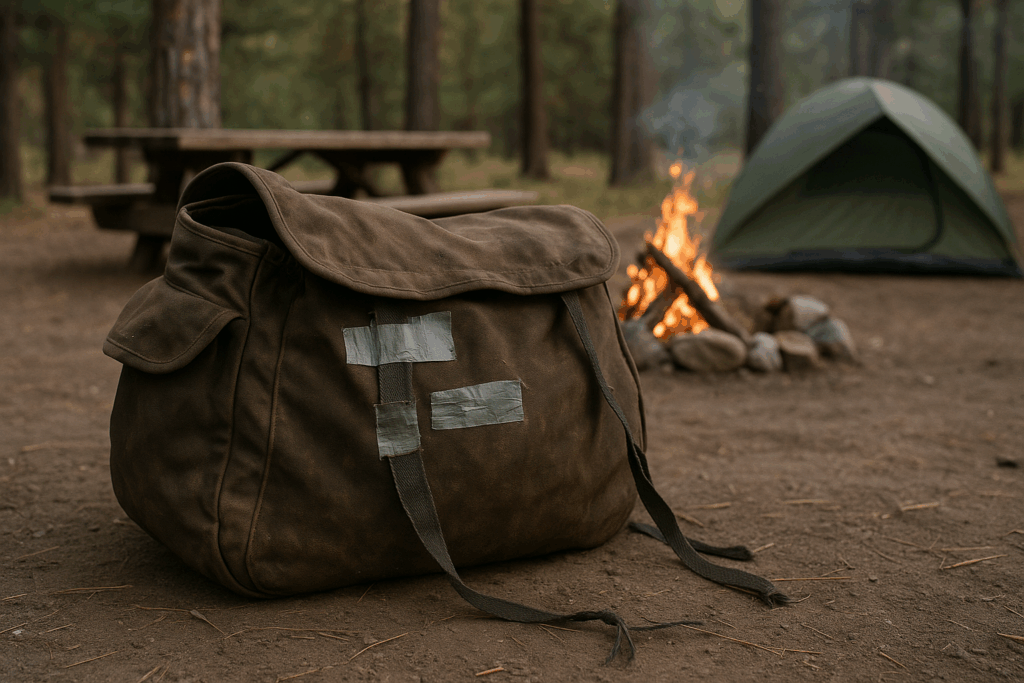
It only took one sharp branch to pierce the “military-grade” myth. And when the stitching unraveled mid-ride, I cursed myself for trusting Amazon over field-proven gear.
🎒 Don’t let aesthetics fool you. If it can’t survive thorns, rain, or vibration—it’s just cosplay.
What Went Wrong:
- Stitching wasn’t bar-tacked
- Webbing wasn’t UV resistant
- Plastic clips failed under tension
Stick with known brands or field-tested gear for saddle storage. If the fabric isn’t thick enough to survive brush, it’s not for survival camping.
🔦 5. The Lantern That Ate Batteries
Gear: Goal Zero Lighthouse Mini Lantern
Verdict: Too power-hungry for road trips
It worked great the first few nights. But even on “low” mode, the lantern chewed through its internal battery fast—and didn’t charge well on my power bank unless I had full sun or a wall outlet.
On one long trip, I ended up using my phone flashlight for 3 nights straight because I couldn’t get this thing charged.
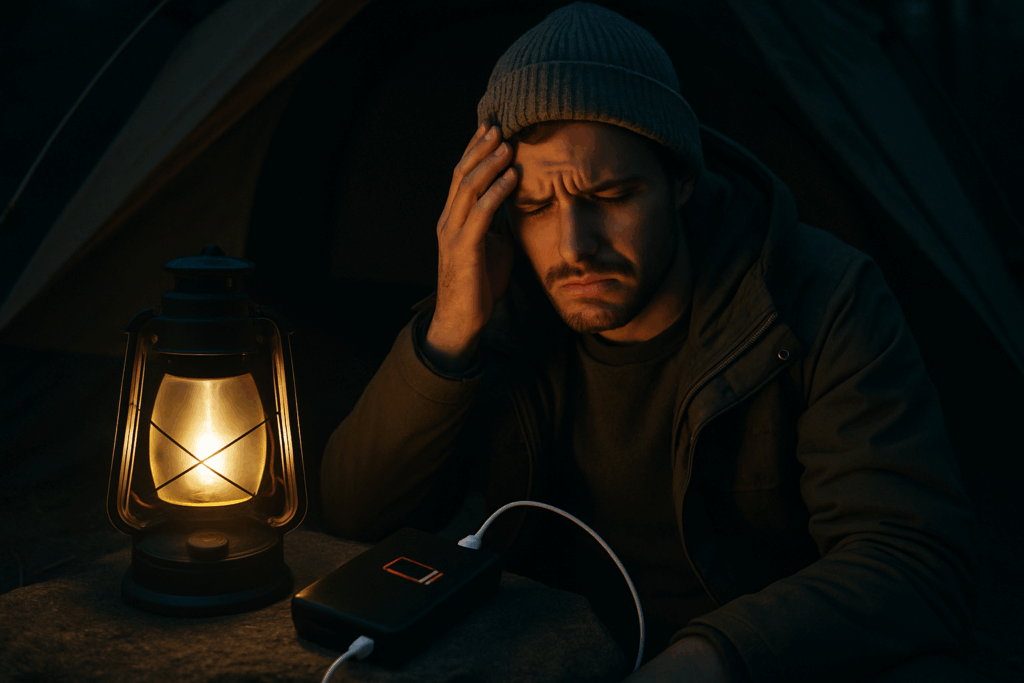
What Went Wrong:
- Poor charging efficiency via USB
- Weak solar panel compatibility
- Not practical without a daily charge source
For off-grid riding, go old school. Battery-powered or crank lanterns are more reliable than USB-dependent lights unless you’re carrying a dedicated solar panel or charging bank.
🧽 6. The “Shower Wipes” That Felt Like Cardboard
Gear: Surviveware Biodegradable Camp Wipes
Verdict: Overpriced disappointment
They claimed to be thick, soft, and great for full-body wipes. What I got? A semi-damp towelette that felt like a disinfecting wipe, smelled like hospital soap, and shredded halfway through use.
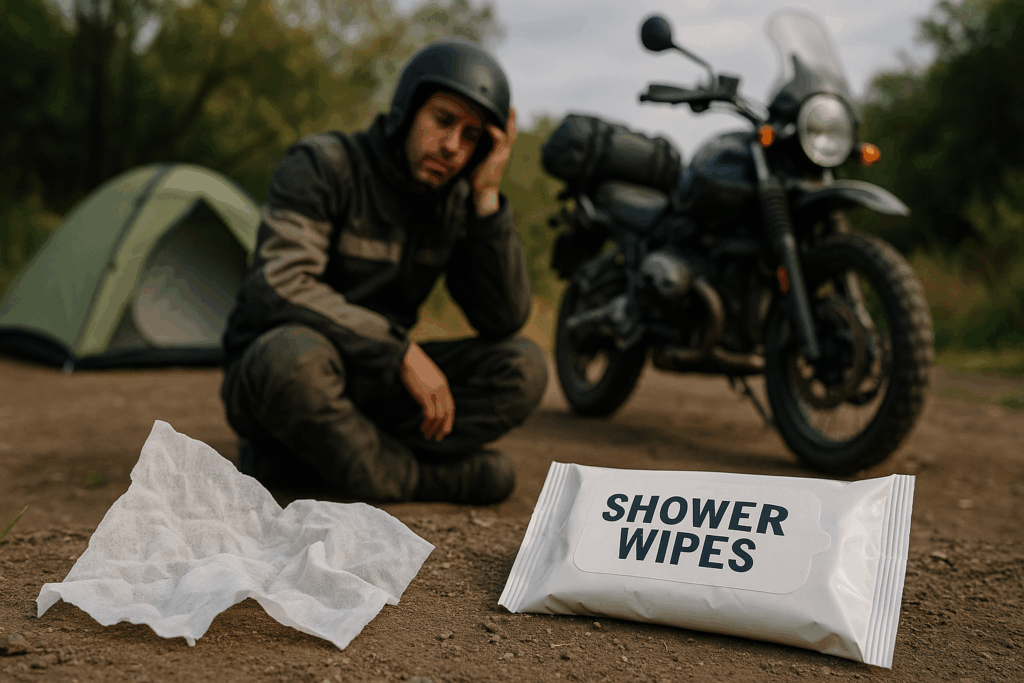
What Went Wrong:
- Too small for adult use
- Poor moisture retention
- Harsh scent that clashed with sensitive skin
If you’re relying on wipes, go with unscented baby wipes in a hard-seal case. Or make your own with paper towels, boiled water, and Dr. Bronner’s.
🛡️ Honorable Mentions: Gear That Barely Passed
These items didn’t fail catastrophically, but they tested my patience.
- Cheap Folding Camp Chair: Legs sunk into sand and bent under 180 lbs. Held up, but barely.
- Foldable Spork: Hinged joint kept collapsing. Functional only if you didn’t stir or scrape too hard.
- Ultralight Tarp: Great size. But corner grommets tore after three nights in gusty wind. Duct tape saved it.
💡 What Actually Held Up (And Surprised Me)
Just to balance things out, here are 3 pieces of gear that I didn’t expect much from—but they delivered:
- Stanley Adventure Cook Set: Bulky but bombproof. Withstood direct flame, accidental drops, and made solid coffee every time.
- Frogg Toggs Ultralight Rain Suit: Ugly. Flimsy. But kept me dry in 4 straight hours of cold mountain drizzle. Packs down to nothing.
- Black Diamond Spot Headlamp: Simple, rugged, and lasted 10+ nights on one set of AAA batteries. No recharging stress.
🧭 Final Takeaway: Don’t Trust Marketing—Trust Field Results
Here’s the truth no brand will tell you:
Not every piece of gear is built for what you’re doing.
Motorcycle camping is rough on equipment. It’s exposed to the elements. It vibrates in the panniers. It gets tossed, soaked, scratched, and forgotten in gravel.
The gear that looks sleek on YouTube may crack under real pressure.
So if you’re gearing up for your own ride, let this post be your warning:
Don’t just look at five-star reviews. Look at survival stories.
Trust what’s ugly, simple, and scarred—but still working.
Because if it survived me, it’ll probably survive you.

